for ELR applications
(pic heavy scroll to bottom)
Which is the best long range scope?
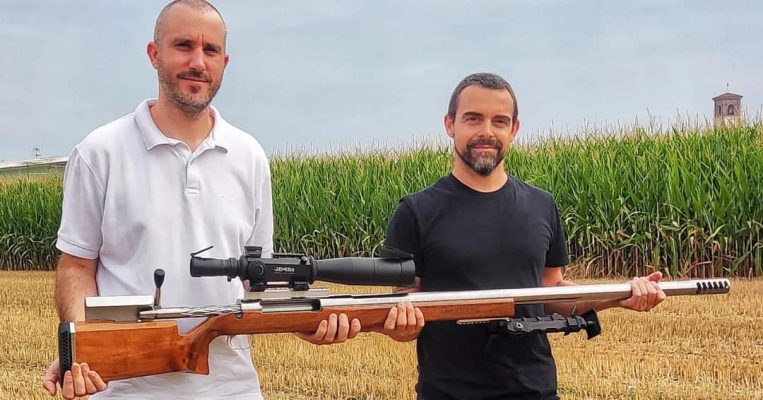
That’s a big question there which we come across often. The path to choosing the best long range scope is a challenging one. It becomes even more challenging the moment you want to take that long range scope past a mile and into ELR territory. With more shooters venturing into this space, we thought to share our journey as part of My ELR shooting story series.
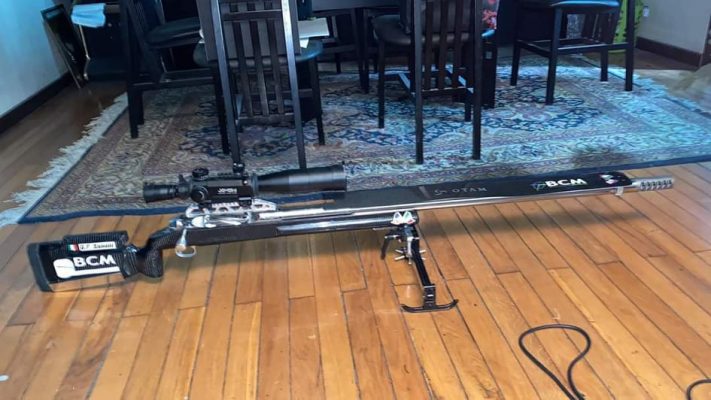
Italian Fclass Champion and ELR fanatic Gianfranco Zanoni built this amazing 416B/ 375Chey in Italy by BCM with March Genesis ELR scope.
For the purposes of this article, we are interested in the best long range scope more specifically for ELR applications. Whether you are actually into ELR or not, we invite you to learn more about this interesting topic that will broaden your view on long range shooting anyhow. Ultimately, there is no long range shooting like ELR shooting.
Best long range scopes over the years
There are many long range scopes out there that will do a great job to a 1000yards from rather entry level 10x magnification rifle scopes to more advanced, heavy duty tactical rifle scopes meant to be used for PRS style matches with adjustable magnification, zero stops, parallax adjustment, single, double or multi-turn turrets and even incorporating digital environmental readings on the scope lens like a heads up display as seen on the Steiner model M7Xi IFS 4-28×56 below.


A 20 year old Leupold VX3 6.5-20 target scope will do 1000yards no problem as will a Nightforce BR 12-42×56. For many years the latter dominated the BR and Fclass lines as a dependable mid level scope. For those living outside the US, these were very priced possessions back in the days.

However most of these optics were limited by vertical travel or rather the amount of vertical adjustment one could dial in to take you further out without the need to hold over or use an offset method. Read more about using an offset method here by ELR champion Ryan Cheney.
20 years ago or so, the Leupold mk4 16x as often seen on the legendary Tac50 used by Rob Furlong, was the apex of rifle scope technology at the time . It sported 120MOA of vertical and fixed 16x magnification in a 30mm tube and a traditional mil-dot reticle. We came a long way today and we’re spoilt for choice when it comes to the best long range rifle scopes. My friend Thomas had this very same scope on his Steyr HS50 BMG, we shot many rounds with this combo to 1800m at the time, more than 15 years ago. It held well and did the job on the army pop up electronic targets in Switzerland.


I had the opportunity to try the Tac50 myself in 2008 during my studies in the Alpine country of Switzerland with the fabulous lads of the FCSA Swiss.

ELR Scope considerations
We have used a fair number of long range rifle scopes over the years however when it came to our ELR applications, the choices were more limited and the prices of these scopes started to become a fairly expensive venture. With some of the best long range scopes priced over $3500 and past even past $4000, the ELR considerations sent us into some serious contemplation. More over we also had to consider the price of the adjustable rifle scope mount that would allow us to make the most of the full adjustment of the scope.
March High Master 5-42×56 long range scope

One of these Eratac adjustable mounts easily runs at $500 while the Ivey is closer to $1000. The Ivey adjustable mount offers up to 200MOA of elevation on a turret adjustable mount which is however on a different plane as its on the side. It can make it more challenging during a timed competition event when you are under pressure to manage two elevation turrets on two different plains. And yes we tested the Ivey with our favorite jig and high magnification scope, the 5-42 March seen here which enables us to hold a very specific point of aim while we dial in the windage. The Ivey was repeatable but it’s a heavy setup especially with some of the heavier ELR scopes that weigh more than 1kg. The popular vortex 6-36×56 scope for example weights 1278grams plus the 907grams of the Ivey makes it a heavy proposition. (2.185kg/ 77oz)

The Eratac combo will take most setups to a max of about 170 MOA/ 49 Mrad or thereabouts however you still need some tools to adjust the Eratac so the best is to set this mount at a specific inclination and let it be.

The largest amount of vertical travel available today is achieved by scopes like the Nightforce 5-25×56 ATACR (120MOA/ 35mrad), the March 5-42×56 High Master (140MOA / 40.7MOA), the new Zeiss LRP 5-25×56 (140MOA or 40.7mrad) or the Hensoldt 3.5-25×56. That’s plenty elevation to take most ELR calibers to about 2500m before running out of elevation on their turret. Keep in mind that most scopes do not like being used at the very far end of their adjustment range and will even limit the amount of windage travel you have available.

Nightforce ATACR 7-35×56 piloting a 300NM above and below on a unique 375 Cheytac blackbird rifle.
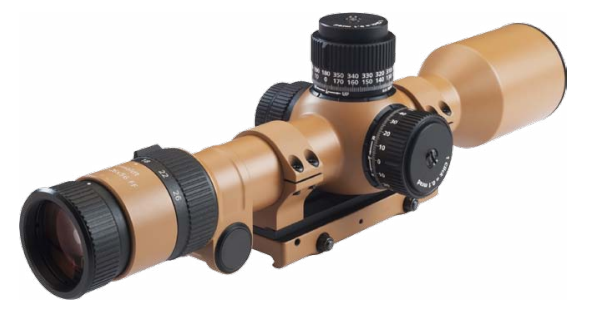
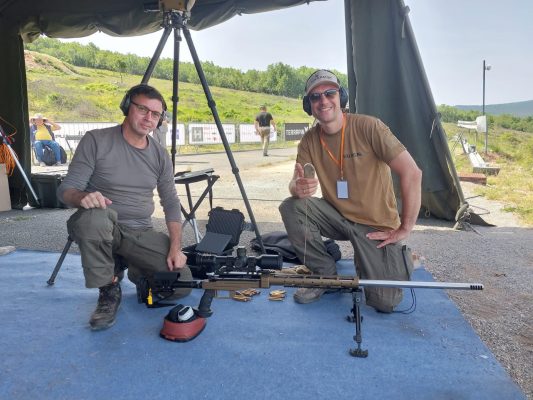
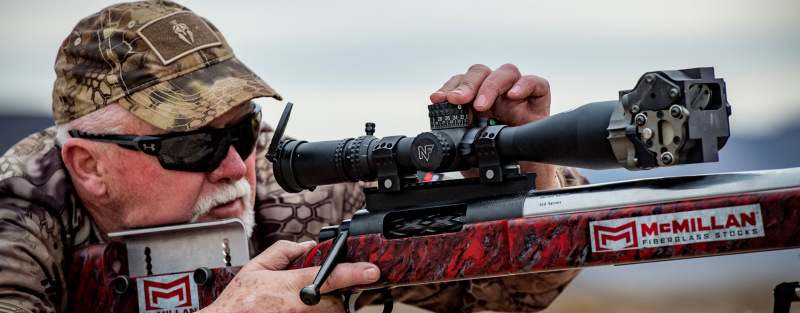
This Hensoldt was the scope of Choice for Stefan Van Der Heide from Holland that cleaned the targets at Ko1M France with his 300 Norma Mag. Stefan loves the simplicity of this Hensoldt scope with its large turrets and simple reticle. Read more about it here with Stefan.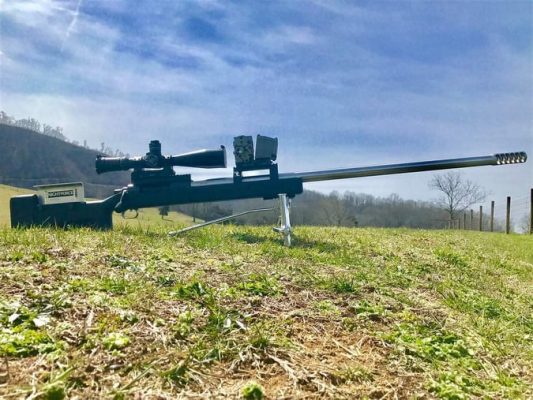
The best long range ELR scope had to be repeatable and dependable. we required over 120MOA/35 Mrad of vertical adjustment as well as a fairly generous amount of windage, ideally with more than 18MOA, 5.2Mrad per half turn on the windage to keep things simple when we need to take those ultra long shots.
So far, we have a scope costing approximately $3500, an Eratac adjustable mount of $500 and we still need a dedicated device to enable us to double the amount of elevation to achieve 200MOA.
Enter the Prism Device – Charlie Tarac, Nightforce Wedge

What is a Charlie Tarac device used for?
The Charlie TARAC is a periscope that optically shifts your target image higher so you aim higher to compensate for bullet drop. The result is an optical, not mechanical, elevation gain to shoot beyond your scope’s travel.(source tacomhq.com)
What should you know about the Charlie Tarac prism device?
Charlie TARACs are calibrated to order. MIL and MOA available.

When you order a Charlie TARAC, either:
1) Match your scope’s total usable elevation. For example, if your scope has 33 usable mils, order a 33 mil Charlie to prevent range gaps. If a target exceeds your scope’s travel, return to zero, deploy the Charlie, and dial the difference. This example yields 0 – 66 mils (33 mil Charlie + 33 mil scope).
2) Select a multiple of ‘5’ or ’10’ for simple arithmetic. For example, if your scope has 33 usable mils, order a 30 mil Charlie, prevents range gaps and having to dial at the edge of your glass, or a 35 mil Charlie and use your scope’s reticle to get a little more top-end. Ordering a 40 mil Charlie (in this example) increases the gap so if you have a target between 33 and 40 mils, you will not be able to dial it.
This technology using mirrors to shift the image you see in your scope by a specific amount has enabled some truly extreme long range shots.
TacomHQ is not the only one making such devices. Nightforce has jumped on the band wagon with their own light weight version.
Nightforce Wedge Prism (260 grams / 9.2oz )
When shooting at extreme ranges, many shooters find their riflescope lacks the necessary elevation travel. The Nightforce Wedge Prism is offered in 2 variants, 50 MOA or 100 MOA, that install forward of the riflescope to increase the effective elevation travel. The Wedge Prism optically shifts the incoming image to the riflescope by a precise elevation value, which directly adds to the available elevation travel within the riflescope. (source: nightforce.com) This means you are able to simply add an extra 50 or 100MOA of vertical adjustment to that which you already have in the scope thus by calibrating your adjustable mounts to allow about 5-10MOA below the zero, you may be left with about 110MOA on a 120MOA scope plus the 100MOA of the Nightforce Wedge Prism. This enables you to go ELR without having to change your scope. It enables you to get into ELR without the higher barrier entry. However consider that you have already bought an Eratac, a scope plus a prism device. Not a cheap run by any means but ELR is the cutting edge of the sport and saving money does not go hand in hand with ELR. However if you want to save on weight, this maybe a good route to go to on your existing scope setup.

Dedicated ELR long range scope – March Genesis 6-60×56. (1.480grams / 52.2 oz)

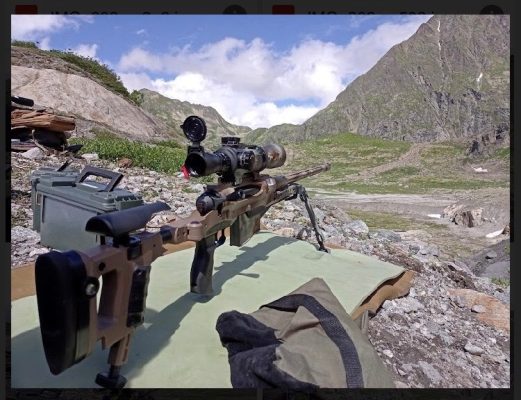
So what if you wanted one option to cater for your ELR needs without having to piece up multiple components? Enter the March Genesis 6-60×56 ELR scope.
That’s what we wanted to do ourselves so we contacted a few March Genesis owners before we decided to buy one. Users from the March Scopes Group were contacted for this survey.
When it came to making my own choice for the best long range scope for ELR, I took the time to take stock of all the above options and even tried and bought multiple ones to see which one works best and what I can imagine myself using. I’m hereby sharing that thought process and the people I interviewed before opting for the March Genesis 6-60×56 scope. The full review of this scope in action on the Tuscan hills in Italy may be viewed here.

This is my setup after I went through this entire survey to help me make up my mind. Seen here setup on my favourite multical platform, the Desert Tech SRS A2.
March Genesis Owners Survey

Which March Genesis Scope do you own?


Benjamin Gineste, winner of Ko1m France opted for the March Genesis for his ELR needs.
March Genesis Reticle choices



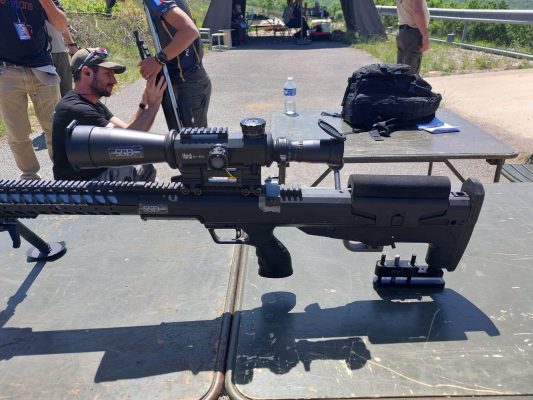
Why did you chose the March Genesis scope and what do you appreciate the most about this scope after using it? 12 replies












